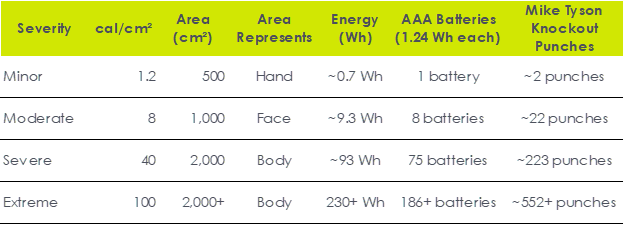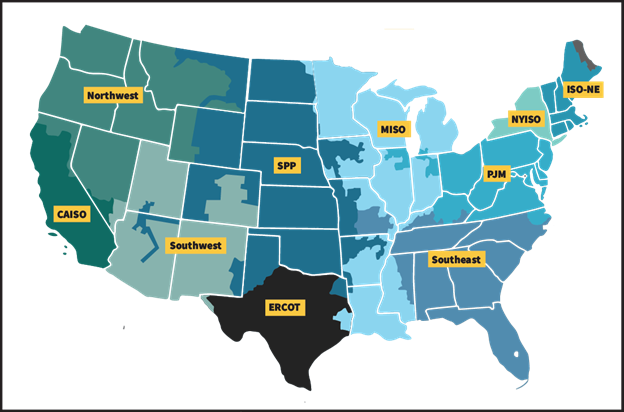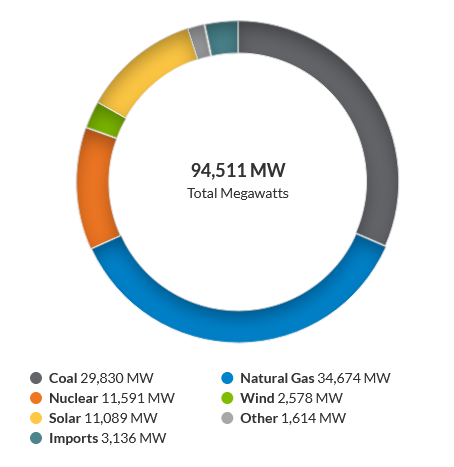
This week, I’m providing the other side of last week’s Less for More Train. From my 30 years of observation in and around the utility industry, utilities were driven into the oncoming mess of less reliability for higher electricity costs.
I use the word bizarre to describe the utility industry to people who are new to it. Utility executives must position and finagle their companies within the boundaries of state and federal rules and mandates, quasi and typically poorly-functioning, half-pregnant competitive markets, turning a profit to attract capital from investors, and trying to keep prices reasonable for customers. Oh, and reliable and “safe,” too.
Can anyone tell me what “safe” means in the context of “affordable, safe, and reliable?” What’s the alternative? Energy is inherently dangerous. A bomb is a large release of energy, and so is an arc flash explosion in an electrical panel. An arc flash happens when a surge of electricity far exceeds (by thousands of times) the carrying capacity of the electrical conductor.
Arc Flash PSA
An arc flash is essentially a lightning bolt that ionizes air, creating a conductive plasma arc that can reach 35,000 degrees Fahrenheit (DuPont Arc Flash Safety Training, based on NFPA and IEEE standards), hotter than the sun’s surface, a cool, crisp 10,000°F. The huge transfer of electrical energy vaporizes portions of the conductors, such as copper, which expands 67,000X, causing a massive pressure wave explosion that may carry molten metal, shrapnel, and plasma.
In another Rant exclusive, you will never find this anywhere on the internet. I translate arc flashes into Mike Tyson blows to your melon (Table 1).
Table 1 Arc Flash Phenomena
 Remember the Ham post? The gist is this: wise people know the answer, and they let the grundoons grind the math to prove them right. In this case, I played both roles. Jeff doesn’t belong in an electric panel or a ring with Iron Mike, and he proved this through research and math.
Remember the Ham post? The gist is this: wise people know the answer, and they let the grundoons grind the math to prove them right. In this case, I played both roles. Jeff doesn’t belong in an electric panel or a ring with Iron Mike, and he proved this through research and math.
Safety with Utilities
Ok, arc flash can happen anywhere, but the most significant risk is probably behind the meter and not the utility’s responsibility. Sam notes utility safety includes delivery and processes that help avoid wildfires, pipeline explosions, and electrocutions due to downed powerlines, which is highly challenging with the WWII-era infrastructure that feeds my hood. I doubt the power delivery method, home by home, meets the electric code today.
Hardly anyone realizes it, but having millions of connected generators, i.e., rooftop solar, and backup generators during an outage exponentially increases the complexity and risk of backfeeding the grid with power when linemen need to make repairs.
For backfeeding safety, I know a little about what I don’t know. Mom and pop interconnections of the solar and backup generator kind include automatic transfer switches (double-throw or interlock style) to isolate the generator from the grid before energizing home circuits. Line crews follow strict safety protocols, testing for de-energization, applying grounding sets, and treating all lines as live until confirmed otherwise. But then, this site refers to “two-phase“ power ????, so I suggest further investigation.
Affordable Electricity
Now that I’ve covered “safe,” let’s move on to affordable. Governors in PJM states, including Maryland, Delaware, Pennsylvania, Virginia, and New Jersey, blame the grid operator for soaring electric bills. That’s interesting—there is no mention of Illinois Governor Pritzker.
Anyway, blaming the grid operator is like blaming the stockyard auctioneer for the high price of beef. That’s an excellent comparison because the beef and electricity markets operate and fluctuate over a year-long timeline, and both are paralyzed by risk aversion and substantial capital requirements.
Backlog Jams
I keep the quote, “I won’t make law if you [lawmaker] don’t design the grid,“ handy when I read about know-it-all politicians blaming grid operators and utilities while they foist policies like renewable portfolio standards onto their states’ utilities. The result is a clogged interconnection queue with over 250 gigawatts of interconnection requests and a peak load of only 135 GW. Grid planners and operators are constantly reshuffling their decks.
To resolve interconnection delays, grid operators are deploying cluster studies, evaluating groups of projects together to reduce redundancy and streamline grid impact assessments. They’re imposing stricter readiness requirements, such as financial and permitting milestones, to filter out speculative proposals early. They’re adding withdrawal penalties to discourage placeholder projects from clogging the queue.
Outsmarting the Model
It’s not the grid operators’ fault that they must deal with ridiculous pipelines of interconnection requests. Vertical electricity markets of the Southeast, Southwest, and Northwest avoid the free-for-all and can plan without the mess left by the raccoons. Vertical markets are more like humans, whereas the RTOs (MISO, SPP, ERCOT, PJM, NYISO, and ISO NE) must behave more like dumb AI. The humans can say, I understand the bogus levelized cost of energy, tax incentives, and future policy risks and changes coming after the current market math makes a mess.
Figure 1: United States Electricity Markets
 Finally, utilities take the heat for keeping coal plants online. Coal plants do two things for the grid, especially where there is a lot of connected wind generation, like in MISO. They keep electricity costs low, as judged by a human, long-term, and provide reliability – circling back to the beginning: safe, reliable, affordable. August is the month of wind doldrums, demonstrated again in Figure 2, which shows a capacity factor of less than 10% during the snapshot noted.
Finally, utilities take the heat for keeping coal plants online. Coal plants do two things for the grid, especially where there is a lot of connected wind generation, like in MISO. They keep electricity costs low, as judged by a human, long-term, and provide reliability – circling back to the beginning: safe, reliable, affordable. August is the month of wind doldrums, demonstrated again in Figure 2, which shows a capacity factor of less than 10% during the snapshot noted.
The epitome of this strategy is MidAmerican Energy, which is under enduring heat to close its coal plants. They’re smart enough not to take that bait because if they did, the organizations that are crying now about the emissions would be howling about the soaring cost of electricity, post-coal.
Figure 2 MISO Generation August 4, 2025, 12:41 CDT
 Summary
Summary
Grid operators are stuck with the models and policies foisted on them by state, local, and federal governments. Utilities deal with the same issues, plus retail prices, safety, and reliability, while keeping the pitchforks of intervenors at bay. It reminds me of when I refereed peewee basketball in college. You have to enjoy making the right call while getting berated by clueless people.

 Summary
Summary